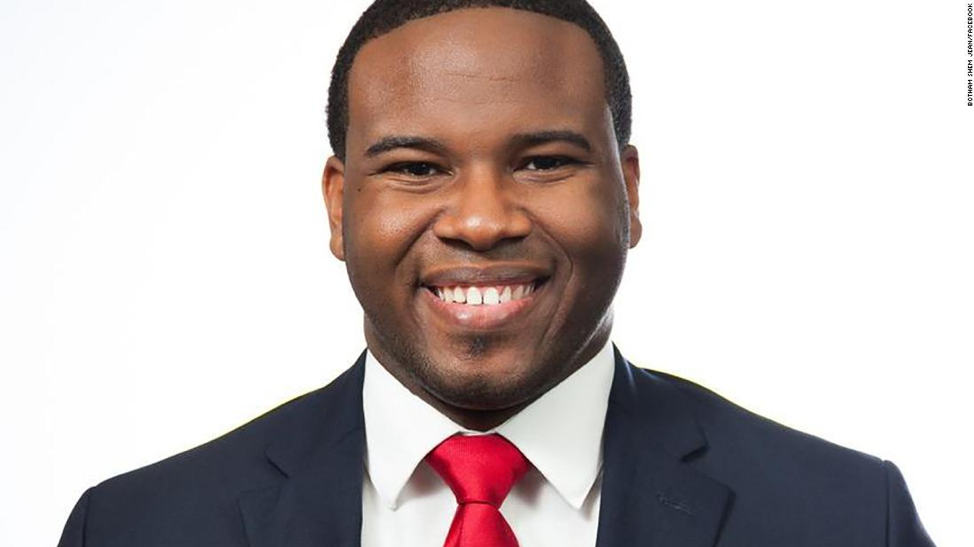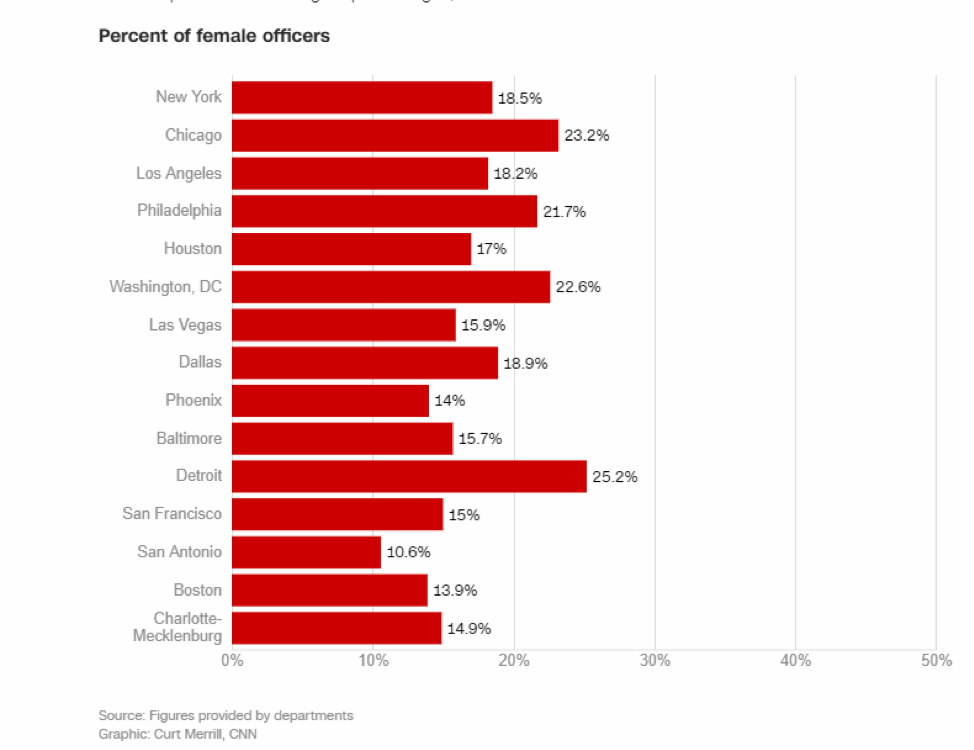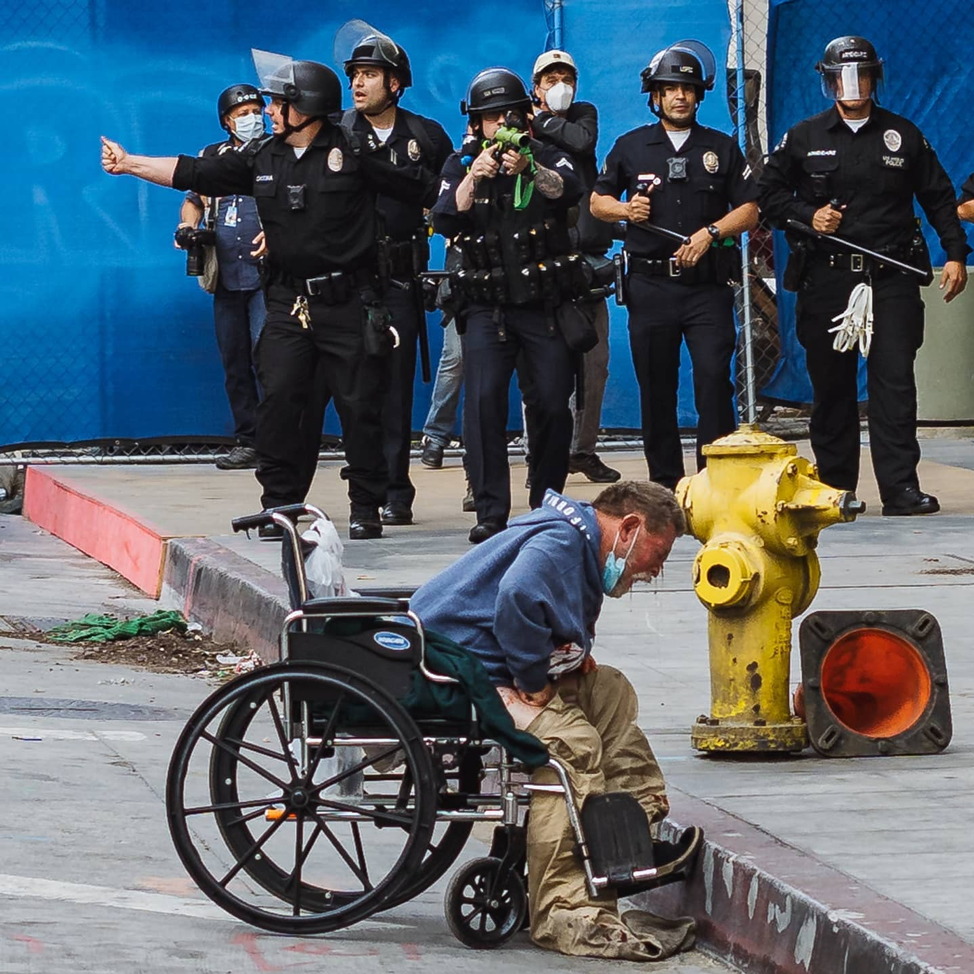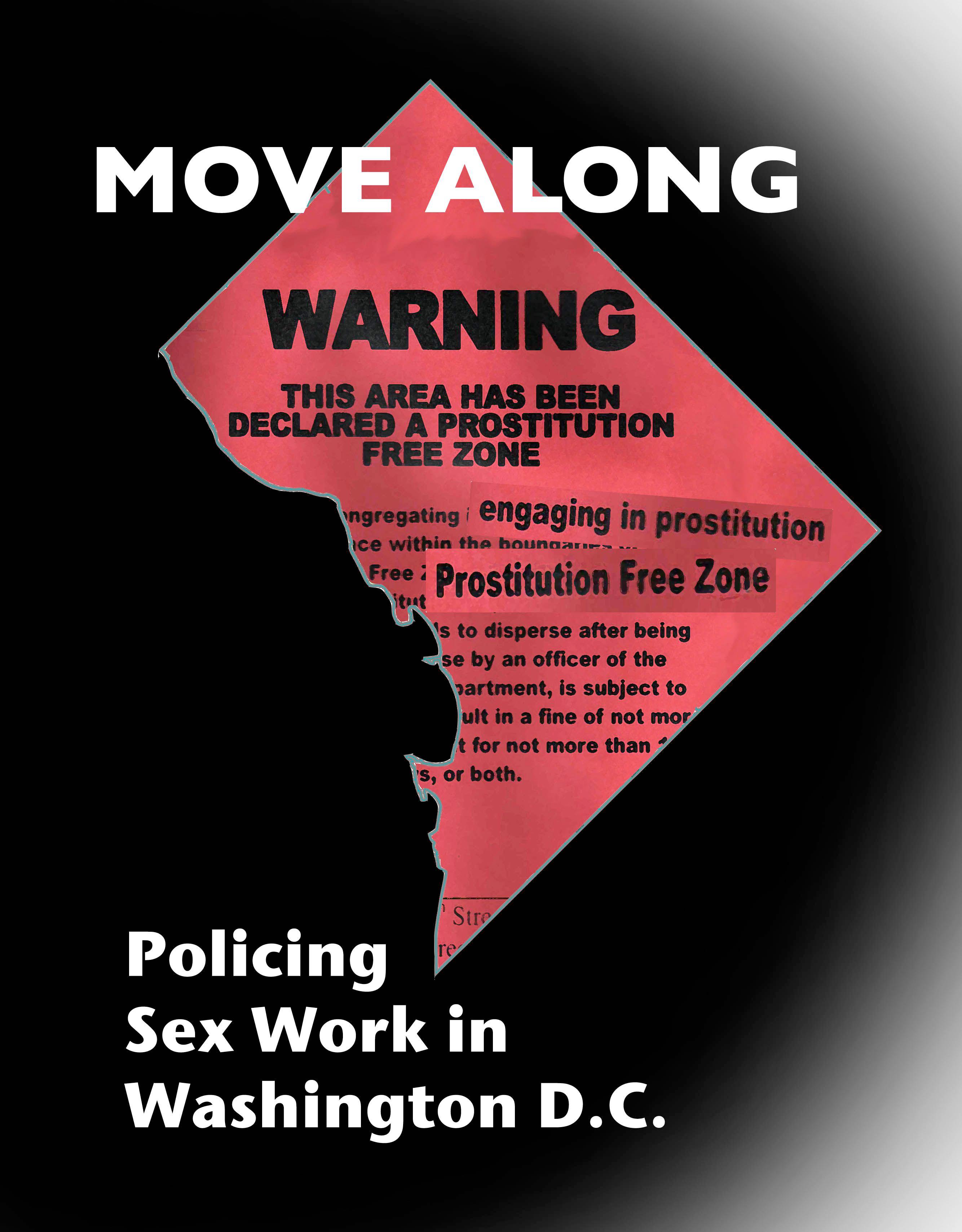
Source: CNN
Listen. Please, CNN.
The concept that to reform an institution that has a history of systemic racism, sexism, and classism is to add in more “diversity hires” is not the answer.
The answer is to dismantle the institution. Not reform, not more trainings, not more money—and no, not hire more women.
I have one name that can counter your argument that women de-escalate: Botham Jean. Well I have one name and an explosion in cases of police brutality where women have entered the police force to counter arguments that an increase to women’s participation would decrease police violence.
Botham Jean was murdered by off-duty police officer Amber Guyger, after Guyger entered the wrong apartment and shot Jean in his own home. Where was the de-escalation? Where was the communication? There was none.
To argue that the gender disparity within the police force contributes to the rise in police brutality (or, maybe a gender equal police force would lower instances of police violence), is not valid given the current climate on the excess in militarization of the police. Let’s also look into the essentialist notion that women are more socialized towards gentleness, compassion, and de-escalation with more gendered understandings of why women are not counted in police killings, reported in police violence statistics, or even reprimanded by the police force when excessive use of force is being reported.
For every police force that has worked to close the gender gap for police officers, there are stories circulating around the country of excessive use of force, violence, and pepper spraying of protestors who are fighting to end the killings of Black people.

In New York, videos have surfaced of police cars driving into protestors, pepper spraying people and arresting people who are working during curfew without a second thought after protests erupting in the wake of George Floyd’s death.
In Chicago, hailed for the second largest inclusion rate of women in the force, police were photographed spraying pepper spray on protestors on State Street, were accused of beating and slamming protestors to the ground after police began use of excessive force on peaceful protestors. Accusations also arose of them targeting darker skinned protestor, Malcolm London, chasing him and beating him with batons before charging him with aggravated battery.
Detroit police officers are among the deadliest in the United States, leading the nation in the rate of fatal shootings by police. That rate Is 2 ½ times higher than New York’s rate and 1 ½ times Los Angeles’. An officer in Detroit was suspended for brutalizing a journalist during a Black Lives Matter protest.
These are only a few instances where correlation does not imply causation. Just because women are being hired into police forces, it does not mean that instances of force will decrease. Los Angeles has been notorious for instigating violence against anyone on the street during protests, most notably by hitting an unhoused man in the eye with a rubber bullet as a protest passed him.

Source: 7 News
How could women be represented in such low statistics of police violence? Maybe it has to do with a combination of factors, including the gendered aspect of policing as well as survivors and victims being unwilling to come forward regarding their brutalization. Maybe it’s from the unwillingness of the department to investigate women police officers, because as the article ascertained, “Women generally tend to be socialized to talk rather than shout, negotiate rather than bully and empathize rather than order”. When we think that women are still gentle and all around harmless, the idea that they have hurt someone might not even warrant an investigation.
And let us not forget, that “every person is different”. Women are not a monolith that are socialized to behave kindly and only with love; that is a form of liberal feminist jargon that argues the world can change if every part of public institutions is 50% women. White women all over this country have taken it upon themselves to police the very behavior of Black people and limit their access to the public safely. In that instance, they are not the empathetic, gentle ear that can de-escalate a situation (especially one that they started).
No, women did not invent de-escalation.
Nor should the police, in all their forms and all their genders, be an operation for community care and healing. The everyday policing should not be, “About social services: domestic violence cases, dealing with people’s mental health problems, getting victims to open up, negotiating”. That is because police were never meant to be these things. They were never meant to help people with mental illness, they were never trained for social services, if they were even trained properly at all. The history of the police force, again, is a history of violent repression of Black people and laborers attempting to fight for better working conditions. They are the arms of the state to control the masses, to suppress any insurrection against the brutality of society. We have continued to fund and militarize police and then act surprised when they commit the acts that they have been sanctioned to use.
As liberals continue their call for reform, the liberal feminist mindset will be “We’ll be safe with women police.” The ultimate co-option will be reform that puts women in the police force at 50% and then call it a success even as police continue brutalizing protestors.
Defunding the police is the aim; abolition is the goal. There should not be the closing of the gender gap of police because there should not be police to begin with. They are vestiges of an old world that just will not die.
We need to reimagine who will be taking over social services because it should not be police; should not be policemen, should not be policewomen, should not be gay police, should not be straight police, should not be trans police, should not be police. Abolitionists have already imagined this world for us, and it is about time we listened.
We do not need to reform the police: we need to abolish them.
